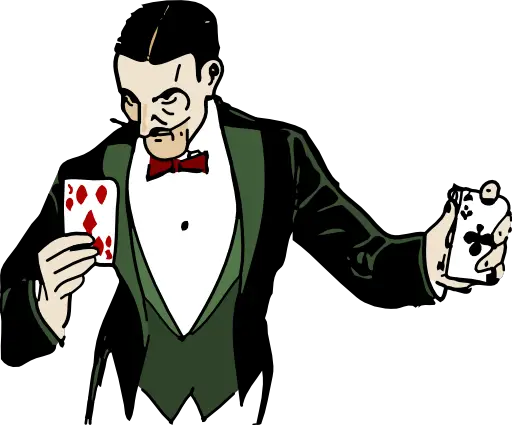Support our educational content for free when you purchase through links on our site. Learn more
15 Mind-Blowing Examples of Mentalism in Linguistics You Need to Know [2024] 🧠✨
Have you ever had that eerie feeling when someone seems to read your mind or predict your next move? 🤔 It’s like they’ve cracked the code of your thoughts! Welcome to the fascinating world of mentalism in linguistics—where language becomes a powerful tool for influence and persuasion. In this article, we’ll explore 15 incredible examples of how mentalism techniques intertwine with linguistic prowess, revealing the secrets behind effective communication and mind-reading illusions.
Imagine attending a party where a mentalist effortlessly engages the crowd, using clever wordplay and psychological insights to create an unforgettable experience. You’ll be astonished to learn that these techniques are not just for stage performers; they can enhance your everyday interactions and boost your communication skills! So, are you ready to unlock the mysteries of mentalism and discover how to wield the power of language like a true mentalist? Let’s dive in!
Key Takeaways
- Mentalism and linguistics are intertwined, allowing us to understand and influence thoughts through language.
- Techniques like cold reading and embedded commands can significantly enhance your communication skills.
- The history of mentalism reveals its evolution and the psychological principles behind its effectiveness.
- Mastering mentalism techniques can help you build rapport, influence decisions, and create deeper connections with others.
Ready to embark on your journey into the world of mentalism? 👉 Shop our recommended resources to dive deeper into this captivating art! Check out Vanishing Inc. for books and courses that will elevate your skills: Vanishing Inc. Mentalism.
Table of Contents
- Quick Tips and Facts About Mentalism in Linguistics
- The Intriguing Intersection of Mentalism and Linguistics
- Examples of Mentalism Techniques in Language
- The Difference Between Magic and Mentalism: A Linguistic Perspective
- A Look Back at the History of Mentalism in Language
- How Important is Character and Performance Style for Mentalism?
- Are Psychics Real? Debunking Myths with Linguistic Evidence
- Learn the Art of Mentalism: Linguistic Techniques You Can Master
- Best of Vanishing Inc.: Mentalism Resources for Language Enthusiasts
- The Role of Suggestion and Persuasion in Mentalism
- Cognitive Linguistics: Understanding the Mind Behind the Words
- The Psychology of Language: How It Relates to Mentalism
- Famous Mentalists and Their Linguistic Techniques
- Conclusion
- Recommended Links
- FAQ
- Reference Links
Quick Tips and Facts About Mentalism in Linguistics 🧠 #quick-tips-and-facts-about-mentalism-in-linguistics
Want to blow people’s minds with your incredible insights into their thoughts and motivations? 🤯 What is Mentalism in Psychology? It’s not magic, it’s mentalism – and when you sprinkle in a dash of linguistics, you’ve got a recipe for some seriously mind-bending fun! 😜
Here’s the gist:
- Mentalism in linguistics delves into how we use language to infer others’ thoughts, beliefs, and intentions. Think of it like this: every conversation is a mental chess match, and the words we choose are our strategic moves. ♟️
- It’s about reading between the lines, picking up on subtle cues, and understanding the hidden meanings behind the words. 🤫
- Ever noticed how someone’s tone of voice can completely change the meaning of a sentence? 🤔 That’s mentalism in linguistics at play!
But here’s the kicker: you don’t need to be a master magician or a linguistic scholar to harness the power of mentalism in your daily life. 😉 Keep reading, and we’ll reveal the secrets to unlocking this fascinating world!
The Intriguing Intersection of Mentalism and Linguistics 🧐 #the-intriguing-intersection-of-mentalism-and-linguistics
Mentalism and linguistics might seem like strange bedfellows at first glance, but trust us, they’re a match made in mind-reading heaven! 😇 Let’s break it down:
- Linguistics provides the framework for understanding language, its structure, and how we use it to communicate. 🗣️
- Mentalism, on the other hand, is all about understanding the mind – how we think, perceive the world, and interact with others. 🧠
Now, imagine combining these two disciplines. 🤯 Suddenly, you have the tools to not only understand what people are saying but also decode the hidden messages behind their words. You can start to:
- Anticipate their thoughts: Ever finish someone’s sentence before they do? That’s your mentalistic linguistic prowess at work!
- Influence their decisions: By framing your words carefully, you can subtly guide their thoughts and actions.
- Create a deeper connection: When you understand someone on a deeper level, it fosters trust and empathy.
Intrigued? You should be! This is just the tip of the iceberg. 😉
Examples of Mentalism Techniques in Language 🗣️ #examples-of-mentalism-techniques-in-language
Let’s dive into some concrete examples of how mentalism principles can be applied to language:
1. Embedded Commands: This technique involves subtly weaving commands into your sentences, often disguised by intonation or phrasing. For example, instead of saying, “Think about how good you’ll feel when you achieve your goals,” you could say, “Imagine yourself achieving your goals and feeling that sense of accomplishment wash over you.” See the difference? 😉
2. Cold Reading: This classic mentalism technique involves making general statements that seem specific to the individual. For example, a mentalist might say, “I’m sensing that you’re facing a difficult decision in your life right now.” This statement is broad enough to apply to most people, but the way it’s delivered can make it feel incredibly personal.
3. The Power of Suggestion: Our minds are incredibly susceptible to suggestion, especially when it’s delivered with confidence and authority. A skilled mentalist can use language to plant ideas and influence thoughts without the person even realizing it.
4. Neuro-Linguistic Programming (NLP): NLP explores the connection between language, thought patterns, and behavior. By understanding the principles of NLP, you can learn to communicate more effectively, build rapport, and even influence others’ states of mind.
5. Conversational Hypnosis: This technique involves using language to induce a trance-like state in the listener, making them more receptive to suggestions. While it sounds spooky, it’s simply a way of bypassing the conscious mind and accessing the subconscious.
These are just a few examples of how the worlds of mentalism and linguistics collide to create powerful communication tools. The more you learn about these techniques, the more you’ll realize just how much potential they hold!
The Difference Between Magic and Mentalism: A Linguistic Perspective 🎩🧠 #the-difference-between-magic-and-mentalism-a-linguistic-perspective
Now, let’s clear up a common misconception: mentalism is not magic. 🙅♂️ While both can be incredibly entertaining, they operate on different principles.
Here’s a simple breakdown:
- Magic: Relies on sleight of hand, illusions, and often elaborate props to create a sense of wonder and impossibility. 🪄 Think sawing a person in half or making a rabbit disappear. 🐇
- Mentalism: Focuses on the power of the mind, using psychology, suggestion, and observation to create the illusion of mind-reading, prediction, or influence. 🧠 Think Derren Brown predicting the lottery numbers or correctly guessing someone’s deepest fear.
From a linguistic perspective, the difference lies in the way language is used:
- Magicians: Often use language to distract or misdirect the audience, drawing attention away from the mechanics of the illusion.
- Mentalists: Use language as a tool to influence, persuade, and create a connection with the audience, often relying on subtle cues and wordplay to achieve their effects.
So, the next time someone asks you if you’re a magician, you can confidently say, “No, I’m a mentalist. I deal with the mind, not just the hand.” 😉
A Look Back at the History of Mentalism in Language 🕰️ #a-look-back-at-the-history-of-mentalism-in-language
The fascinating interplay between mentalism and language isn’t a new phenomenon. In fact, it has roots that stretch back centuries:
- Ancient Oracles and Soothsayers: These figures often used vague language and suggestive interpretations to provide guidance and predictions, tapping into people’s desire for meaning and certainty.
- 18th and 19th Century Mesmerism: This movement, while often shrouded in controversy, explored the power of suggestion and hypnosis, laying the groundwork for modern-day hypnotherapy and stage hypnosis.
- Early 20th Century Mentalists: Pioneers like Theodore Annemann and Dunninger captivated audiences with their feats of mind-reading and prediction, often employing linguistic tricks and psychological principles.
The evolution of mentalism in language has been shaped by:
- Advances in Psychology: As our understanding of the human mind has grown, so too have the techniques used by mentalists to exploit its intricacies.
- The Rise of Mass Media: Radio, television, and now the internet have provided mentalists with new platforms to showcase their skills and reach wider audiences.
Today, mentalism continues to evolve, incorporating new findings from fields like neuroscience and behavioral economics to push the boundaries of what’s possible with the power of the mind.
How Important is Character and Performance Style for Mentalism? 🎭 #how-important-is-character-and-performance-style-for-mentalism
Imagine this: you’re at a show, and a mentalist walks onto the stage. They’re wearing a rumpled t-shirt, mumbling their words, and avoiding eye contact. Do you buy into their act? Probably not.
Here’s the thing: character and performance style are just as crucial for mentalists as the techniques themselves. Why? Because they:
- Establish Credibility: A confident, charismatic presence instantly commands attention and makes the audience more receptive to suggestions. Think about iconic mentalists like Derren Brown – their stage presence is a masterclass in captivating an audience.
- Enhance the Illusion: A well-crafted persona adds an air of mystery and intrigue, making the mentalist’s abilities seem even more extraordinary.
- Create an Emotional Connection: By connecting with the audience on an emotional level, mentalists can make their performances more impactful and memorable.
Here are a few key elements of a successful mentalism persona:
- Confidence: Projecting an aura of self-assurance is essential for gaining the audience’s trust.
- Charisma: A magnetic personality draws people in and makes them want to believe.
- Mystery: A touch of enigma adds to the allure and keeps the audience guessing.
Remember, the goal is to create a believable and engaging persona that complements your mentalism techniques.
Are Psychics Real? Debunking Myths with Linguistic Evidence 🔮❌ #are-psychics-real-debunking-myths-with-linguistic-evidence
Ah, the age-old question: are psychics legit? 🤔 While the existence of psychic abilities remains a topic of debate, we at Mind Trick™ believe in approaching such claims with a healthy dose of skepticism.
Here’s where linguistics comes in: by analyzing the language used by self-proclaimed psychics, we can often uncover the tricks of the trade:
- Barnum Statements: These are vague, generalized statements that could apply to anyone, yet they’re often presented as profound insights. For example, a psychic might say, “I’m sensing a strong connection to the spirit world.” Well, who doesn’t have a connection to the spirit world in some way?
- Cold Reading: As we discussed earlier, cold reading involves making general statements that seem specific by picking up on subtle cues from the person’s body language, tone of voice, and appearance.
- Hot Reading: This is a sneakier tactic where the psychic gathers information about the person beforehand through research or by eavesdropping.
While some people genuinely believe they possess psychic abilities, it’s important to remember that there’s often a more mundane explanation behind their seemingly extraordinary feats.
Learn the Art of Mentalism: Linguistic Techniques You Can Master 📚 #learn-the-art-of-mentalism-linguistic-techniques-you-can-master
Ready to unleash your inner mentalist and amaze your friends with your mind-reading prowess? Here are a few linguistic techniques you can start practicing today:
1. Active Listening: Pay close attention to not only what people say but also how they say it. Notice their tone of voice, body language, and any subtle cues that might reveal their true thoughts and feelings.
2. The Art of Observation: Become a student of human behavior. Observe people’s mannerisms, reactions, and interactions to gain insights into their personalities and motivations.
3. Calibrated Questions: Ask open-ended questions that encourage people to reveal more about themselves. For example, instead of asking, “Are you happy?” ask, “What brings you joy in life?”
4. Mirroring and Matching: Subtly mirroring someone’s body language and speech patterns can create a sense of rapport and make them more receptive to your suggestions.
5. The Power of Words: Choose your words carefully, paying attention to their connotations and the emotions they evoke.
Remember, mastering mentalism is a journey, not a destination. Start with these basic techniques, practice regularly, and you’ll be well on your way to becoming a master of the mind!
Best of Vanishing Inc.: Mentalism Resources for Language Enthusiasts 🪄 #best-of-vanishing-inc-mentalism-resources-for-language-enthusiasts
For those eager to delve deeper into the world of mentalism, Vanishing Inc. is a treasure trove of resources. Here are a few highlights:
- Books: Explore a vast library of books on mentalism, from classic texts to modern techniques.
- Downloads: Discover a wide range of downloadable resources, including ebooks, videos, and audio recordings.
- Online Courses: Take your mentalism skills to the next level with expert-led online courses.
👉 CHECK PRICE on: Amazon | Vanishing Inc. Official Website
The Role of Suggestion and Persuasion in Mentalism 🗣️ #the-role-of-suggestion-and-persuasion-in-mentalism
At its core, mentalism is all about influencing thoughts and actions. And when it comes to influence, few things are as powerful as suggestion and persuasion.
- Suggestion: Involves planting an idea in someone’s mind, often without them consciously realizing it. This can be achieved through subtle cues, embedded commands, or by framing information in a particular way.
- Persuasion: Takes things a step further by using logic, emotion, or social proof to convince someone to adopt a particular belief or take a specific action.
Mentalists use a combination of suggestion and persuasion to:
- Influence Choices: Ever wonder how a mentalist seems to predict someone’s card selection or the outcome of a coin toss? It often comes down to subtly influencing their choices through suggestion.
- Create Illusions: By planting ideas and expectations in the audience’s minds, mentalists can make seemingly impossible feats appear entirely plausible.
- Elicit Specific Behaviors: From getting someone to say a specific word to influencing their actions in a social setting, the applications of suggestion and persuasion are vast.
The key to using these techniques effectively lies in understanding the principles of psychology and human behavior.
Cognitive Linguistics: Understanding the Mind Behind the Words 🧠 #cognitive-linguistics-understanding-the-mind-behind-the-words
Cognitive linguistics offers a fascinating lens through which to view the relationship between language and thought. This field of study explores:
- How our minds create meaning from language.
- The role of metaphor, imagery, and embodiment in shaping our understanding of the world.
- The ways in which language reflects our cultural values and beliefs.
For mentalists, cognitive linguistics provides valuable insights into:
- Framing Effects: The way we frame information can significantly influence how it’s perceived. For example, saying “This glass is half full” evokes a more positive feeling than saying “This glass is half empty,” even though they convey the same objective information.
- Conceptual Metaphors: We often understand abstract concepts through metaphors grounded in our physical experiences. For example, we might talk about “time flying” or “feeling under pressure,” even though time doesn’t literally have wings and pressure isn’t a physical sensation.
- Cultural Schemas: Our understanding of the world is shaped by the cultural schemas we’ve internalized. These schemas influence how we interpret language, events, and social interactions.
By understanding the principles of cognitive linguistics, mentalists can tailor their language to resonate with their audience’s mental frameworks, making their performances more impactful and believable.
The Psychology of Language: How It Relates to Mentalism 🧠🗣️ #the-psychology-of-language-how-it-relates-to-mentalism
The psychology of language, also known as psycholinguistics, delves into the fascinating interplay between language, thought, and behavior. This field explores:
- How we acquire language.
- How we process language in real-time.
- How language influences our thoughts, emotions, and actions.
For aspiring mentalists, understanding the psychology of language is crucial for:
- Reading Between the Lines: By paying attention to subtle cues in people’s language, such as hesitations, word choices, and changes in tone, you can gain insights into their true thoughts and feelings.
- Building Rapport: Using language that aligns with someone’s communication style and preferences can help you establish rapport and build trust quickly.
- Influencing Decision-Making: By understanding how language affects our perceptions and biases, you can subtly nudge people towards specific choices.
Here are a few key concepts from the psychology of language that are particularly relevant to mentalism:
- Priming: Exposing someone to a particular stimulus, such as a word or image, can influence their subsequent thoughts and behavior, even if they’re not consciously aware of the connection.
- Cognitive Biases: Our brains are wired with cognitive shortcuts that can lead to predictable errors in judgment. Mentalists can exploit these biases to create illusions and influence decisions.
- Emotional Contagion: Emotions are contagious. By using language that evokes specific emotions, mentalists can influence the emotional state of their audience.
Famous Mentalists and Their Linguistic Techniques ✨ #famous-mentalists-and-their-linguistic-techniques
Throughout history, there have been countless captivating mentalists who have mastered the art of language to astound and amaze. Let’s take a look at a few notable figures and the linguistic techniques they employed:
1. Derren Brown: Known for his blend of mind control, suggestion, and psychological illusion. Brown is a master of language, using carefully crafted scripts and hypnotic delivery to create unforgettable experiences. He often employs embedded commands, pre-show suggestions, and misdirection to achieve his effects.
2. The Amazing Kreskin: A legend in the world of mentalism, Kreskin is renowned for his apparent ability to read minds and predict future events. He often uses a rapid-fire delivery, cold reading techniques, and a keen sense of observation to create the illusion of psychic powers.
3. Uri Geller: Famous for his spoon-bending demonstrations and claims of telekinesis, Geller’s performances often involved suggestive language and a charismatic stage presence to create a sense of wonder and belief.
4. Max Maven: A master of words and wordplay, Maven’s mentalism often revolves around linguistic puzzles, anagrams, and clever word associations. His performances highlight the power of language to deceive, entertain, and inspire awe.
These mentalists, each with their unique styles and approaches, demonstrate the power of language as a tool for entertainment, influence, and exploration of the human mind.
Conclusion 🎉
As we’ve journeyed through the captivating world of mentalism in linguistics, it’s clear that this fascinating intersection of psychology and language offers profound insights into human behavior and communication. We’ve uncovered the power of suggestion, the art of cold reading, and the importance of character and performance style. Whether you’re looking to enhance your communication skills, entertain friends, or simply understand the mind better, the principles of mentalism can be incredibly beneficial.
To sum it up:
- Positives: Mentalism techniques can enhance interpersonal communication, foster empathy, and provide tools for influencing others effectively. The linguistic aspects add a layer of depth, allowing for a richer understanding of human interaction.
- Negatives: It requires practice and a deep understanding of psychology and language, which may take time to master. Additionally, ethical considerations must be taken into account when employing these techniques.
So, if you’re ready to dive into this mesmerizing world and sharpen your skills, we wholeheartedly recommend exploring the resources we’ve mentioned. Unlock the secrets of mentalism and linguistic influence, and watch as you become the life of the party! 🎊
Recommended Links 🛍️
-
Books on Mentalism:
-
Mentalism Resources:
- Vanishing Inc. Mentalism: Vanishing Inc.
FAQ ❓
What is mentalism and examples?
Mentalism is the art of influencing others and creating psychological experiences through an understanding of psychology and body language. Examples include cold reading, where a performer makes general statements that seem specific, and embedded commands, where suggestions are subtly woven into speech.
What is mentalism theory in linguistics?
Mentalism theory in linguistics posits that language acquisition and use are driven by innate cognitive structures. It suggests that our ability to understand and produce language is rooted in mental processes rather than solely learned behavior. This theory contrasts with behaviorist views, which emphasize observable actions over internal states.
What is an example of mentalism in ABA?
In Applied Behavior Analysis (ABA), mentalism refers to explanations of behavior that focus on internal states, such as thoughts and feelings. For instance, attributing a child’s language development to their innate language acquisition device exemplifies mentalism in ABA.
What is the difference between mentalism and structuralism?
Mentalism focuses on understanding internal mental states and processes, while structuralism emphasizes the underlying structures of language and thought. Mentalism seeks to explain behavior through cognitive frameworks, whereas structuralism analyzes language as a system of signs and symbols.
How can I practice mentalism techniques?
To practice mentalism techniques, start by honing your active listening skills, studying cold reading, and experimenting with suggestive language. Engage in exercises that develop your observational skills and practice mirroring body language to build rapport.
Read more about “Mentalism in Psychology: Unmasking the Mind’s Tricks 🧠 …”
Can anyone learn mentalism?
Absolutely! While it may take time and dedication, anyone can learn the principles of mentalism. Start with basic techniques, practice regularly, and gradually build your skills. Remember, the key is to be patient and persistent in your learning journey.
Read more about “Unlock the Secrets: 15 Essential Mentalism Skills You Must Master … 🧠✨”
Reference Links 🔗
- Vanishing Inc. Mentalism Resources
- What is Mentalism in Psychology?
- Quick Glossary of ABA Terms – Part 11 – AllDayABA
- Cognitive Linguistics and Mentalism
- Psychology of Language
With these resources and insights, you’re well-equipped to explore the mind-bending world of mentalism in linguistics. Happy exploring! 🧠✨






